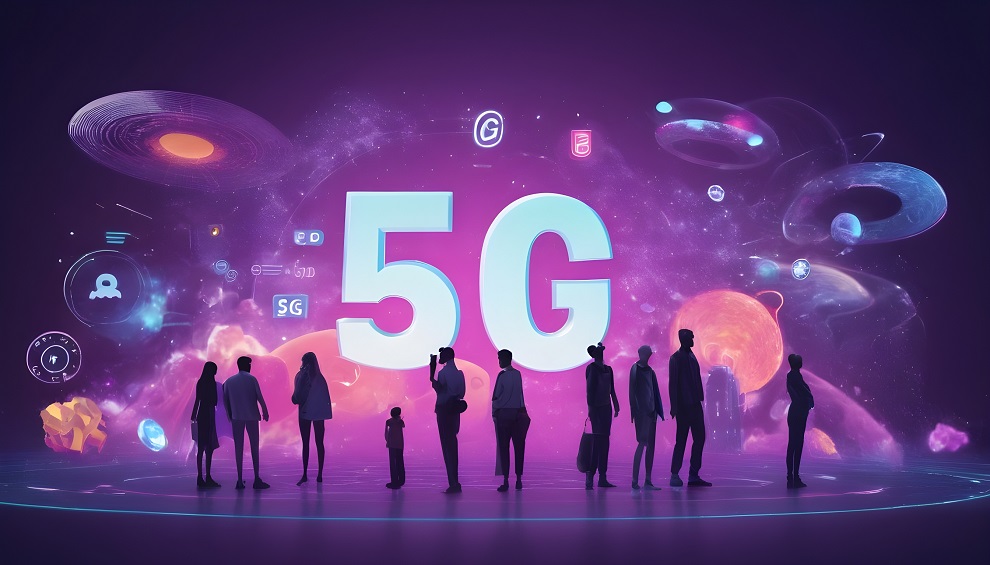Industry opportunities driven by developments in 5G Standalone, 5G-Advanced, enterprise IoT and AI, GSMA Open Gateway and new revenue realisation through the BCE standard
New figures from GSMA Intelligence (GSMAi) show 5G connections are expected to represent over half (51%) of mobile connections by 2029, rising to 56% by the end of the decade – making 5G the dominant connectivity technology. 5G has been the fastest mobile generation rollout to date, surpassing one billion connections by the end of 2022, rising to 1.6 billion connections at the end of 2023 and 5.5 billion by 2030.
As of January 2024, 261 operators in 101 countries had launched commercial 5G services, and more than 90 operators from 64 markets have committed to rollouts. Of the 261 commercial 5G services available, 47 are provided by 5G Standalone (SA) networks, with a further 89 planned deployments near-term that will take advantage of network slicing, ultra-reliable low-latency communications support and the simplified 5G SA network architecture.
The growth of available 5G SA networks, and improved support for private & dedicated networks, will support a massive number of connected devices and help to realise the global IoT vision for the enterprise. GSMAi data shows the enterprise segment now counts 10.7 billion IoT connections (versus 10.5 billion consumer connections) and this momentum is expected to continue, with enterprise connections more than doubling to 38.5 billion by 2030 and smart buildings and smart manufacturing accounting for 34% and 16% of total enterprise connections respectively.
Beyond 5G SA, the availability of 5G-Advanced with 3GPP Release 18 will be another key 5G milestone in IoT delivery, providing the catalyst for new 5G investment throughout 2024 and into 2025. GSMAi data shows over half of operators expect to begin deploying 5G-Advanced within a year after commercial availability of 5G-Advanced solutions, driven by priority use cases such as 5G multicast services and low-cost IoT support.
GSMAi predicts a fourfold rise in mobile data traffic between now and 2030 with expansions in 5G coverage and capacity playing a prominent role, showcasing the importance of continued infrastructure investments. It is predicted that monthly global mobile data traffic per connection will grow from 12.8 GB in 2023 to 47.9 GB in 2030.
The increasing use of Generative AI (GenAI) – 56% of operators are currently testing applications – will also likely fuel this growth. This will be driven by applications including the use of GenAI-enabled chatbots for customer service efforts or the continued growth of AI-generated video and music content.
Peter Jarich, Head of GSMAi, said: “The early success of 5G was driven by enhanced mobile broadband (EMBB) and EMBB-related network traffic requirements. Yet, while consumer requirements will continue their trajectory, we’re now seeing use cases beyond that. Opportunities are now appearing in areas including API monetisation and 5G RedCap for enterprise IoT – all supported by 5G-Advanced and 5G SA networks. 5G SA brings home 5G’s early promise, particularly where slicing, low-latency and massive IoT capabilities tied to enterprise service needs can be met. 5G-Advanced will only extend that further.”
Revenue realisation
New use cases will deliver new revenue streams for operators – which in turn brings a new focus to billing for 5G services. As more 5G SA networks become available, a new standard for billing was required to support the rollout of advanced network services and the flexible billing process that 5G SA cores offer.
The GSMA worked with its members, including AT&T, Deutsche Telekom, Swisscom and Vodafone, to develop and launch a new Billing and Charging Evolution (BCE) standard to replace Transferred Account Procedures (TAP). The BCE Standard represents a simplified charging model and will be a requirement for operators looking to implement 5G SA networks and deliver value from wholesale roaming settlement in 5G, LTE and operational efficiency of IoT.
Commercialising network APIs
Network API exposure is offering operators another route to maximise returns on their 5G investments and generate revenue beyond the traditional approach of selling connectivity services. GSMA Open Gateway is now empowering operators to harness the full potential of new capabilities built into 5G networks. In the 12 months since launching, 47 mobile operator groups – representing 239 mobile networks and 65% of global connections – have now committed to exposing their network APIs via CAMARA.












